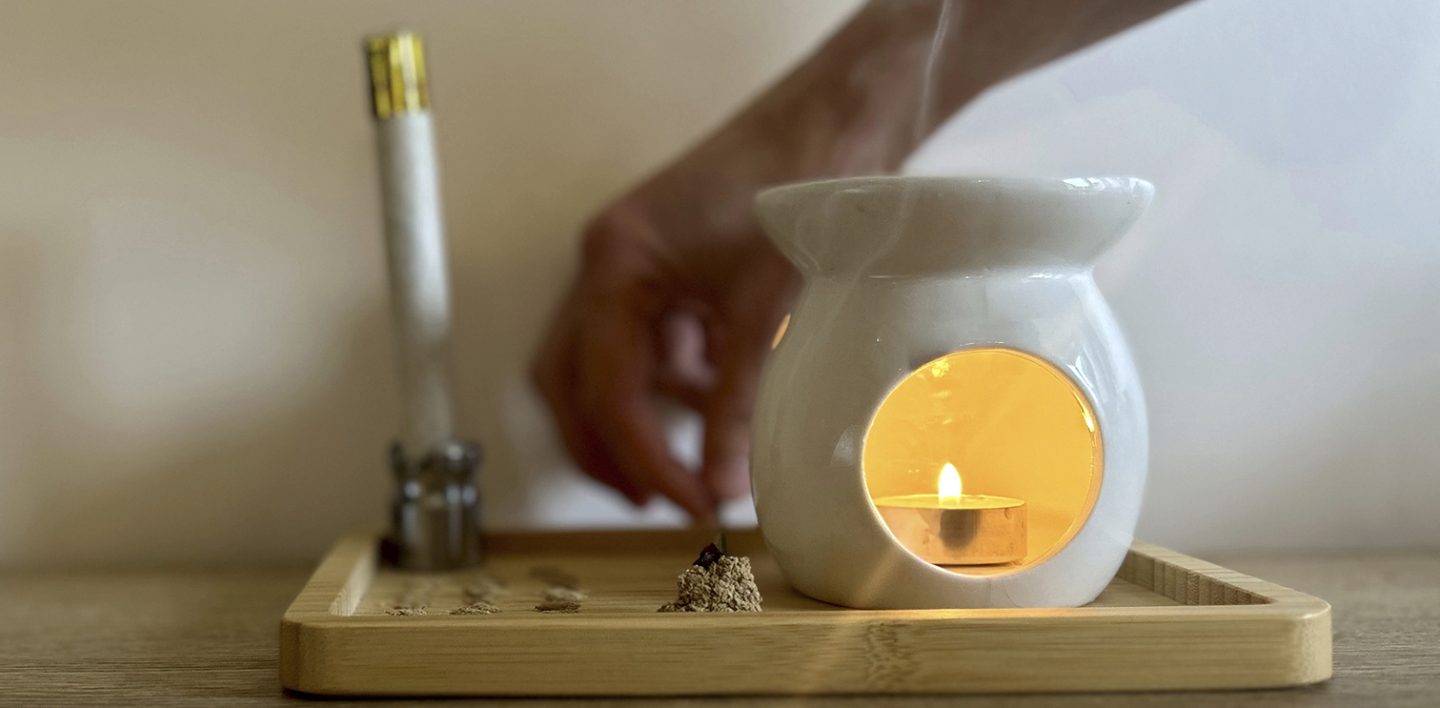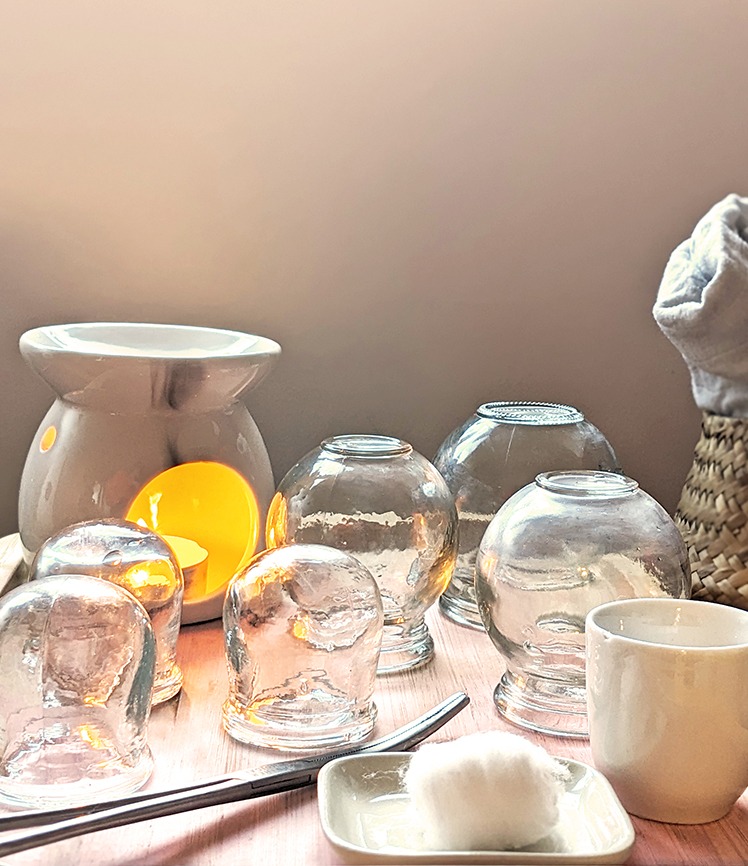Treatments

Treatments
Acupuncture
An ancient practice which involves the insertion of fine needles into specific points along channels of the body
Although there are many acupuncture points around the body, the most common areas to needle include the lower arms, lower legs and head. New, sterile acupuncture needles are always used which are safely disposed of immediately after, as per UK regulations. The process includes needle insertion, manipulation (gently moving or twirling needles after placement) and removal.
Needle depth penetration depends on the area of the body where they are inserted. Before each treatment, the practitioner will discuss where they intend to place the needles and make sure the patient is happy and comfortable with the needle location.
Tui Na
A Chinese Medical Massage involving pushing, pressing, rubbing and holding a patient’s acupressure points in order to restore the flow of Qi and rebalance the body.
Usually used in combination with and is as effective as acupuncture, it is also regarded as a favourable, less-invasive alternative, especially for those who suffer from trypanophobia (fear of needles). Tui Na is used to treat a variety of both physical and mental conditions, including but not limited to musculoskeletal conditions, headaches, migraines, anxiety, stress and hormonal imbalances to name a few.
A practitioner will drape a cloth over the patient to facilitate the traditional techniques used to focus on various acupressure points. Treatment may be performed lying down and/or sitting up depending on the targeted area(s), and the pressure applied will be dictated by the patient.
As self-care is considered a foundational pillar of Chinese Medicine, TCM practitioners may encourage and instruct patients to self-massage and/or perform certain exercises at home to aid treatment received in clinic.

Gua sha
This traditional and highly valued technique uses Gua (“press stroke”) to encourage local healing
Gua Sha has recently undergone an enormous popularity boom arguably endorsed by the beauty industry. However, this traditional technique addresses and treats many more health issues then simply one’s appearance.
Gua Sha can have a powerful dual impact on the body where it can cool a patient who is too warm and warm a patient who is too cool. A therapeutic friction is created whereby any clean, solid, smooth, round-edged tool is used to repetitively and methodically press, stroke and scrape the skin, tissues and muscles. Using comfortable pressure to shift any negative stagnation present in the body, with the purpose of reinvigorating and supporting the flow of Qi.
Sha refers to the little red dots (‘petechiae’) which may appear during application of Gua (“press stroke”). These dots usually dissipate shortly after treatment into a generalised redness due to the stimulation of blood flow as well as the rebalancing process occurring within the body.
It is used to treat a variety of issues including muscle tension, discomfort, spasms, pain, stress, anxiety, upper respiratory and digestive problems to name a few. The practitioner uses disposable tools in treatments and may show you how you can use these techniques at home.
Important aftercare may include avoiding exposure to sun or wind until the Sha has faded, ideally keeping the treatment area covered for 48 hours as this may impact the treatment site.
Moxibustion (using Moxa)
An ancient method which involves the burning of the ground herb Chinese Mugwort (Artemisia Argyi) to warm and stimulate acupoints
Although the technique precedes acupuncture, today it is commonly used together as this treatment combination can be considered more effective.
Moxibustion can be performed directly or indirectly to the skin; different techniques exercised include placing the moxa on the handle of a needle, a moxa stick, on another therapeutic material such as ginger, or directly onto the skin.
When performing direct moxibustion, the practitioner should remove the lit moxa before it touches the skin. Charlotte mainly practices rice grain moxa where a very small amount of moxa is placed directly onto the skin.

Ba Guan – Cupping
Either fire cupping or with suction cups
An ancient traditional medicine technique using cups, with the objective of encouraging the movement of blood and Qi to re-balance the body and resolve pain. The method consists of removing oxygen from the cups in order to create a vacuum, traditionally by flame, but modern advances have developed suction devices which enable the cups to attach to the skin.
The cup is then quickly placed onto the skin, where, due to the vacuum, creates slight force which ultimately stimulates the patient’s blood to be reinvigorated. Treatment time is short (5-10 minutes) compared to other TCM methods.
Cupping is beneficial in treating pain, inflammation such as musculoskeletal conditions by improving blood flow, as well as immune support including removing toxins from the body.

Heat Lamp
The Thermal Design Power (TDP) Heat Lamp delivers infrared light therapy.
A heat lamp can be used to support other treatment methods. By adding heat to problematic areas it can relieve pain and encourages healing.
Once activated by heat, the mineral coated plate consisting of many elements including iron, copper, calcium, zinc to name a few. It emits a specific band of electromagnetic waves to elevate tissue temperature promoting blood circulation.
The double head on the lamp enables a more effective treatment whereby the practitioner can either focus both heads on a specific area or guide each head to target separate areas simultaneously. This is considered an alternative to moxibustion.

Reiki
Effectively used in combination with all other treatments listed above
Reiki is a Japanese energy healing technique which encourages relaxation and stress reduction through gentle touch. Practitioners use their hands to channel Qi into and through the patient’s body in order to restore its flow and balance, therefore supporting their body’s healing and well-being. A holistic procedure, it compliments and aids other forms of medical and therapeutic treatments.
There are no known side effects due to the light nature of this treatment.

Yang Sheng (Lifestyle Advice)
To nourish life
The most important part and considered the foundational belief of ancient Chinese Medicine is prevention rather than cure.
It may be considered the holistic self-care aspect of living, where the principle is to foster health and well-being by nurturing the body, mind and spirit in everyday life.
This practical advice, which includes dietary advice, exercise, breath work and sleep hygiene to name a few, is meant to sustain the necessary balance in a person’s body. The practitioner will discuss your health and general lifestyle in your treatment sessions, after which advice and recommendations will be made.

Author
admin@charlottehazeldine.com